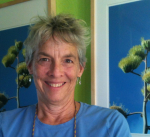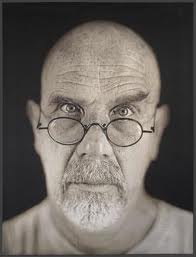Pina, Extraordinary
 Saturday, January 5, 2013 at 09:57PM
Saturday, January 5, 2013 at 09:57PM Run, don't walk to Netflix to see Pina by Wim Wenders.
 Pina,
Pina,  film in
film in  Creativity and other big ideas
Creativity and other big ideas 
Artist, maker, teacher, author, head cook and bottlewasher.
Sign up here for monthly newsletters from me!
The art I make is the result of a life-long love of pattern, texture and color. How I teach is a skill honed by experience (I started teaching creative arts to younger kids when I was 12). After earning a B.A. in Studio Arts from Trinity University, I helped lead an internationally recognized educational foundation, designed curriculum exhibits for schools and other institutions, wrote and edited for a major daily newspaper, opened the San Antonio Children's Museum and then, a dozen years ago, took the scary but essential (for me) leap to become a fulltime artist and art teacher.
This weblog is about the maker's life. The teacher's path. The stitching and dyeing and printing of the craft of art cloth and art quilt. The stumbling around and the soaring, the way the words and the pictures come together. Poetry on the page and in the piecing of bright scraps together. The inner work and the outer journeys to and from. Practicalities and flights of fancy and fearful grandeur, trivial pursuits and tactile amusements. Expect new postings two or three times a week, unless you hear otherwise.
To reach me, leave a comment after a post, OR email me at susiemonday@gmail.com
To receive a notice of new posts in your email, scroll down this column to the end of the page and subscribe via FEEDBLITZ or add this blog to your own subscription service. You can search the blog with any phrase or word, by typing it into the seach window below:
 Saturday, January 5, 2013 at 09:57PM
Saturday, January 5, 2013 at 09:57PM Run, don't walk to Netflix to see Pina by Wim Wenders.
 Pina,
Pina,  film in
film in  Creativity and other big ideas
Creativity and other big ideas  Saturday, January 5, 2013 at 09:00AM
Saturday, January 5, 2013 at 09:00AM 
My work is part of this exhibition -- in the 24 by 80 Exhibit of Art Cloth. Art Cloth Network member Deborah Weir is the guest curator for the three exhibits. Please leave me a comment if you get to see it -- I'd love to know what you think! The exhibit is in California at the Palos Verdes Art Center in North Los Angeles.
My work is titled HUMMER, and was inspired by observing the black throated hummingbirds in the blossoms of the Century Plant. The exhibit features art cloth work unified by its 24" by 80" size by members of ACN. Art Cloth Network is seeking some additional members for its 30-member (max) national organization. If you'd like more info and a link to submission/application information, send me an email on the comment form or the contact form on the sidebar.

 Palos Verdes Art Center,
Palos Verdes Art Center,  exhbitis in
exhbitis in  Art Cloth,
Art Cloth,  Exhibits
Exhibits  Wednesday, January 2, 2013 at 06:42PM
Wednesday, January 2, 2013 at 06:42PM  Sometimes what makes us powerful are our very limitations. I'm fully devoted to the notion that we find our best and strongest work by working from our strengths -- that is, after all what my book The Missing Alphabet is all about-- but defining one's strengths takes astute and deep consideration. Sometimes what looks like a weakness or disability to a parent, a teacher, the culture at large, or even to oneself can become, with a change of perspective, our greatest strength.
Sometimes what makes us powerful are our very limitations. I'm fully devoted to the notion that we find our best and strongest work by working from our strengths -- that is, after all what my book The Missing Alphabet is all about-- but defining one's strengths takes astute and deep consideration. Sometimes what looks like a weakness or disability to a parent, a teacher, the culture at large, or even to oneself can become, with a change of perspective, our greatest strength.
This article in the New York Times about artist Chuck Close makes the point.
“I wanted people to notice me, not that I couldn’t remember their faces or add or subtract,” Close said, referring to the learning and neurological disabilities that set him apart from his classmates when he was growing up in Monroe, Wash.
A terrible writer and test-taker, Mr. Close used art to make it through school. Instead of handing in a paper, he told the children, “I made a 20-foot-long mural of the Lewis and Clark trail.”
What are you calling a limitation that could be a defining element of your work?
All good and fine direction is defined by the "rules" that limit its scope. We don't (often or successfully) try to include every trick pony in the stable in one piece of art. Or use every color in equal proportions.
Some limitations need addressing, maybe a technical skill we need to improve, or our eye for a strong composition. But some things that I hear artists bemoaning on line --- their age, that they aren't good at drawing, that they only have a couple of hours in the week to make art-- might be just the "rules" that can help define their work. For example, in my case, I don't draw very well, I am getting better, but sketching is probably never going to be my FAVORITE art activity, and certainly understanding and mastering line and value, as good sketch artists do, is not something I am cut out to do.
I long ago figured out that I could cut shapes and forms far better than I could draw them (go figure, its just the way my brain works). I had to figure that out in order to proceed in making my work have the narrative content I wanted to share. I don't compare my weakness in drawing to Close's neurological inability to recognize faces, but I do count finding an approach to art that was a work-around one that is a great gift and strength in my work.
Some limitations, like Close's, might even turn out to be the great stand-out quality in our work.
For more about Close, listen to this podcast from PBS.
 Tuesday, January 1, 2013 at 09:21AM
Tuesday, January 1, 2013 at 09:21AM 
Intentions:
1. Keep my eyes on the prize.
2. Breathe deeply at every stoplight.
3. Watch more birds and less TV.
4. Connect, adventure, create, align and imagine.